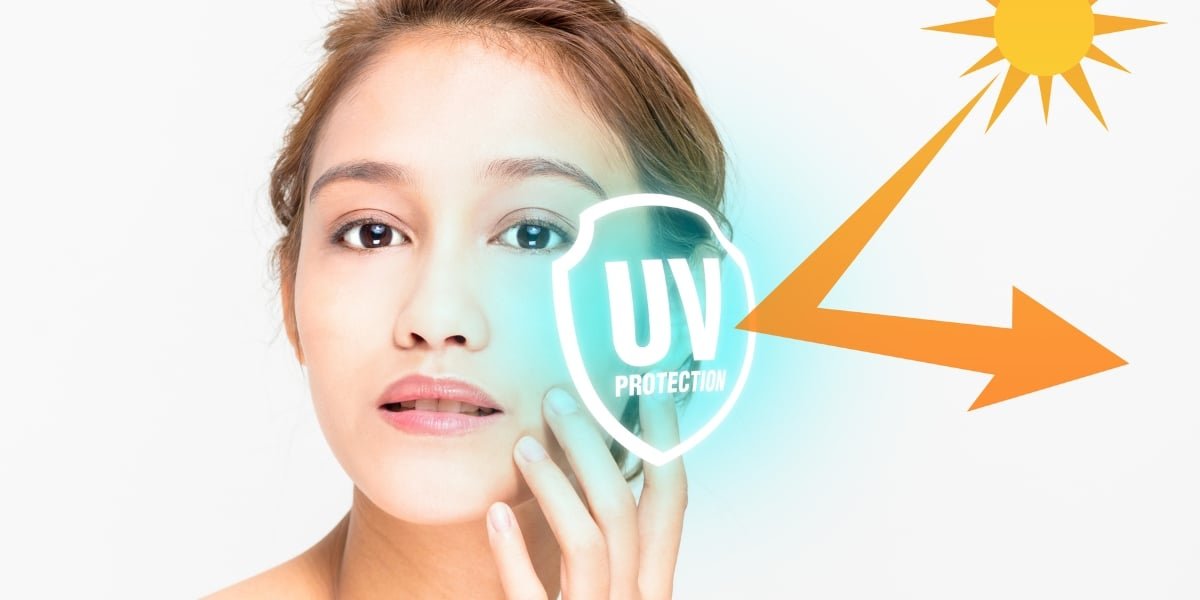Blog
Tinted vs. Untinted Sunscreen: Key Differences You Need to Know

When it comes to skincare, sunscreen is undoubtedly a must-have. It helps protect your skin from harmful ultraviolet (UV) rays, preventing sunburn, premature aging, and even skin cancer. But as the skincare industry evolves, so do the products it offers. One of the growing debates in the sunscreen world is whether tinted or un-tinted sunscreens are better. With tinted sunscreens gaining popularity, it’s important to understand the key differences between tinted vs. un-tinted sunscreen and which one is the right choice for you.
In this article, we’ll break down the differences between tinted and un-tinted sunscreens, their benefits, and which one is suitable for your skin type. Whether you’re from a sunny region like Pakistan or dealing with different skin concerns, this guide will help you make an informed decision.
What is Tinted Sunscreen?
Tinted sunscreen is a type of sunscreen that contains a subtle pigment or color that provides additional coverage. This tint can range from a sheer, light tint to a more noticeable, deeper color. The primary purpose of the tint is to provide an extra layer of protection against the sun’s rays, while also offering some cosmetic benefits like evening out skin tone and providing a natural glow.
Tinted sunscreen is commonly used by individuals who are looking for sun protection along with some coverage, similar to what you might get with a foundation. The pigment in tinted sunscreen can also help protect your skin from visible light, such as blue light from screens, which can also contribute to skin aging.
What is Un-tinted Sunscreen?
Un-tinted sunscreen, also known as regular or clear sunscreen, is simply a sunscreen without any added color or pigments. Its primary function is to shield the skin from harmful UV rays with an active ingredient like zinc oxide, titanium dioxide, or chemical filters. Un-tinted sunscreens offer the same level of sun protection as their tinted counterparts, but without any extra cosmetic benefits such as color correction or evening out the skin tone.
Un-tinted sunscreens are often chosen by those who prefer a more natural look or want to avoid the potential risk of irritation caused by added pigments or fragrances. They’re also ideal for individuals with sensitive skin, especially when a more transparent application is desired.
Key Differences Between Tinted vs. Un-tinted Sunscreen

1. Protection Level
Both tinted and un-tinted sunscreens provide protection from harmful UV rays, but they do so in different ways.
- Tinted Sunscreen: The pigments in tinted sunscreen offer an additional layer of defense against the sun. This is because the color helps absorb or block visible light, which can cause skin aging. The added pigmentation can also give some immediate coverage, making it an excellent option for individuals looking for both skincare and cosmetic benefits. Tinted sunscreens provide a smoother, more uniform appearance by evening out skin tone. If you’re also concerned about open pores, How to Close Open Pores: Easy Steps for Clear Skin can help you achieve a flawless base before applying sunscreen
- Un-tinted Sunscreen: Un-tinted sunscreen, on the other hand, primarily protects against UV radiation. It is effective in shielding your skin from both UVA (aging rays) and UVB (burning rays), but it does not offer additional visible light protection. However, it’s just as effective in preventing sunburn and long-term skin damage caused by UV exposure.
2. Skin Tone Matching
- Tinted Sunscreen: One of the standout benefits of tinted sunscreen is that it helps match your skin tone. It provides a subtle, sheer coverage that can minimize redness, dark spots, and uneven skin tone caused by the sun. The pigment in tinted sunscreens can also act as a lightweight foundation, giving you a smoother, more uniform appearance.
- Un-tinted Sunscreen: Un-tinted sunscreen doesn’t offer any skin tone benefits. It’s ideal for individuals who don’t need coverage or who prefer a more natural, non-makeup look. While un-tinted sunscreen might leave a white or greasy residue, there’s no risk of it clashing with your skin tone.
Additional Benefits of Tinted Sunscreen
- Enhanced Protection: Tinted sunscreens provide an additional layer of defense against not only UV rays but also visible light, such as blue light from screens, which has been shown to contribute to skin aging and pigmentation.
- Reduces Dark Circles: The tint in these sunscreens can also work wonders for those with dark circles under their eyes. It can provide light coverage, camouflaging blemishes or imperfections caused by UV exposure.
Choosing the Right Sunscreen for Your Skin Type
1. Tinted Sunscreen for Oily Skin
If you have oily skin, you may be concerned about the added coverage from tinted sunscreen making your face feel greasy. Luckily, many tinted sunscreens designed for oily skin are lightweight and oil-free, helping you avoid clogged pores and excess shine. The best tinted sunscreen for oily skin typically comes with a matte finish or is formulated with oil-absorbing ingredients, providing sun protection while keeping your skin looking fresh.
2. Best Tinted Sunscreen for Dry Skin
For those with dry skin, a tinted sunscreen with hydrating ingredients, such as hyaluronic acid or glycerin, is an excellent choice. These formulations will not only protect you from the sun but also provide moisture to the skin. The best tinted sunscreen for dry skin should be nourishing and have a dewy finish, ensuring that your skin stays hydrated throughout the day.
3. Un-tinted Sunscreen for Sensitive Skin
Sensitive skin types can benefit from un-tinted sunscreens because they are usually free from pigments and fragrances that can trigger irritation. Look for un-tinted sunscreens that contain physical blockers like zinc oxide or titanium dioxide, as they are less likely to irritate sensitive skin.
Sunblock Benefits
No matter if you’re choosing tinted or un-tinted sunscreen, the benefits of sunblock are undeniable.
1. Anti-Aging Benefits
Sunscreen helps reduce the visible effects of aging, such as wrinkles and fine lines. Both tinted and un-tinted sunscreens provide UVA protection, which is the primary culprit for premature aging.
2. Reduces Risk of Skin Cancer
Skin cancer is one of the most common forms of cancer worldwide. Sunscreen helps protect the skin from harmful UV rays, significantly reducing the risk of skin cancer. The level of protection offered by tinted vs. un-tinted sunscreen is generally the same, as long as both are broad-spectrum and have a high SPF.
3. Protects Against Skin Discoloration
Sunscreen also prevents the formation of dark spots and pigmentation caused by sun exposure. Tinted sunscreen can enhance this protection by providing additional coverage, making it an excellent choice for individuals dealing with hyperpigmentation. For individuals dealing with pigmentation or dark spots, How to Naturally Remove Dark Spots at Home: Causes & Remedies offers effective, natural solutions to help fade those imperfections.
How to Apply Tinted and Un-tinted Sunscreen Correctly
Proper application of sunscreen is essential for optimal protection. Here’s how you can apply both types correctly:
- Un-tinted Sunscreen: Apply generously to all exposed skin at least 15 minutes before sun exposure. Don’t forget areas like your ears, neck, and hands. Reapply every two hours.
- Tinted Sunscreen: Apply tinted sunscreen in the same manner as un-tinted sunscreen. However, you may want to blend it in to ensure it matches your skin tone and provides an even coverage. To ensure the best results when applying sunscreen, start with a proper skincare routine. For glowing, oil-free skin, you can incorporate exfoliation.
Check out: 20 Best Homemade Scrubs for Glowing Oily Skin in 2024 for some fantastic scrub ideas.
Tinted vs. Un-tinted Sunscreen in Different Climates: A Pakistan Perspective
In regions like Pakistan, where the sun shines brightly and temperatures soar, sunscreen is crucial. Due to the hot and humid climate in many parts of Pakistan, un-tinted sunscreens may be more appealing for those who want a lightweight option without added coverage. However, in urban areas where air pollution is high, tinted sunscreens can offer extra protection against visible light, including blue light exposure from screens.
The best approach is to assess your skin type and the environment you live in, as both factors will influence which sunscreen is ideal.
Conclusion
Choosing between tinted vs. un-tinted sunscreen depends on your skin type, preferences and needs. While both provide excellent UV protection, tinted sunscreens offer additional cosmetic benefits such as evening out skin tone and providing coverage. On the other hand, un-tinted sunscreens are ideal for those who prefer a more natural look without any added color.
Ultimately, the best sunscreen is the one that suits your skin type and lifestyle. Whether you choose a tinted sunscreen for added benefits or an un-tinted one for straightforward protection, both can keep your skin safe from the sun’s harmful rays.


